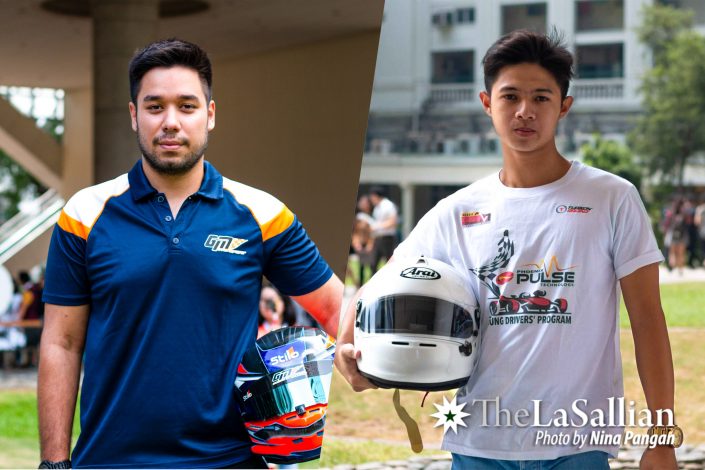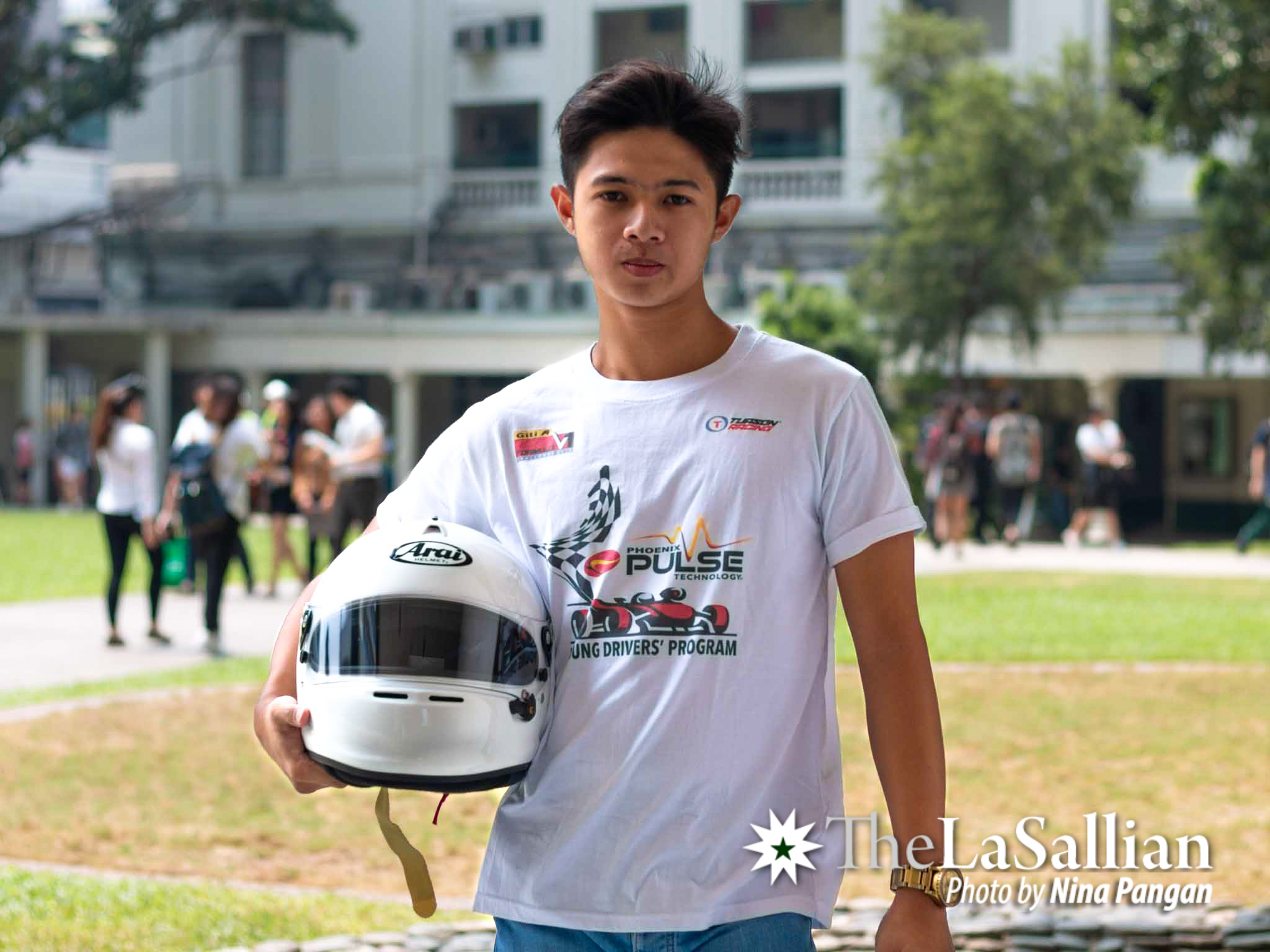There is something about speed that people revel in. A wide variety of sports involves speed and racing, and among these sports, race car driving is one of the most challenging. Countless factors play major roles in this motorsport—the race track, weather, tires, aerodynamics, and most prominently, the cars.
However, racing is more than just cars. The sport places a heavy bearing on the driver behind the wheel who orchestrates every movement, forging a harmony with the acceleration, brakes, and gear shifts lap after lap. Driving a race-car takes skill, composure, dedication, and most of all, grit. To get a better perspective of the sport, Lasallian student racers Andres Calma and Raffy Rabe discuss the nitty-gritty elements involved in race car driving with The LaSallian.

Two stellar racing careers
Calma first began racing rental karts with his friends at the age of five, which ultimately kickstarted his racing career. During his early years, Calma raced in tournaments such as the Asian Karting Open Championship, a major karting event in Asia. In 2014, he competed in the Vios Cup and later on won the championship in the top class the following year—a major milestone for the racer, which he considers his biggest success thus far. He eventually made the decision to leave the series before joining the GT200 class, a grand touring car championship, the same series he currently participates in.
While there are racers like Calma who start out as kids, Rabe, on the other hand, began racing as a college student, proving that age does not play a determining role in success. He has made achievements competing in major events, including the Sodi World Series, Togue Battle, and the FlatOut Racing Series. He currently races in this year’s season of Formula V1 Challenge, one of the country’s own race series. Rabe shares that garnering the Phoenix Pulse sponsorship after a rigorous and competitive application process has been his biggest achievement in his racing career by far.
In pursuit of race-car driving
For Rabe and Calma, racing began the moment they laid their hands on the wheel. Rabe had been driving ever since he received a Subaru BRZ from his uncle in the year 2016, while Calma dates his humble beginnings to the first time he got to test drive a real go-kart. Furthermore, Calma shares that feeling the difference from driving a kart over a rental was second to none. “The feeling of the speed and adrenaline was something I knew I needed in my life,” he affirms.
In addition, Rabe admits he wanted to pursue the sport the moment he started going back to the track more often. He explains, “I even went [to] karting tournaments just to simulate how it felt…that’s when I knew for myself that racing was going to be something that I would like to do in the future.”
When asked about the particular figure they look up to, both chose their favorite drivers. For Calma, if he had to choose, he’d go with Finnish driver Kimi Raikkonen. Rabe shares that he idolizes Keiichi Tsuchiya, who in his opinion, is one of the greatest drivers in Japan.
As to the reason behind his choice, Calma shares, “[Raikkonen’s] someone I’ve been watching since I was younger and he’s always been entertaining to watch…I like how he’s always calm.” With regard to his pick, Rabe explains in a similar awed fashion, saying, “I think he’s the most complete driver out of them all because he’s one of the best drifters…for me he’s the best.”

Key elements on the track
Training is an essential element in every athlete’s progress, and these two drivers have unique training routines. Both Calma and Rabe dedicate their weekends to training at the Clark International Speedway and the Batangas Racing Circuit. Similarly, the two racers utilize the tracks to test their cars, run practice sessions, and study the tracks.
A racer’s training, however, goes beyond working on the physical aspects. Like in all sports, mentality plays a critical role in every driver’s race. Rabe shares that before his races, he imagines the race track and envisions how he plans to drive through each corner. Calma also practices a similar mental exercise before racing. He explains that he visualizes several possible situations that might occur during the race, and he tries to conjure up pertinent responses for each one. The forward-thinking mentalities that these drivers practice reinforce their vigor on the track, and enhance their capabilities all the more.
Building up the momentum
In a driver’s perspective, expenses can play a major role in determining the longevity of one’s career. Likewise, most people would think that racing requires a lot of money. Depending on the type of racing one will pursue, maintenance can be quite expensive for an aspiring Filipino driver. In addition, not a lot of people would ponder on the possibility of creating a foundation to get a sponsorship. However, this generalization did not stop Rabe from working for his dreams.
Rabe believes that how much you pay does not matter when it comes to pursuing race car driving. “It doesn’t mean that you can’t race. Look at me, I didn’t have to buy the car. Thankfully I was sponsored, I think that means through my hard work, discipline, and everything else, it builds up.”
The young racer also shares that as long as long as ‘you have the skill, discipline, and you are determined’, you will reach the same point as being sponsored without shelling out a lot. “Keep working hard, because you don’t need to be rich to join racing…you can show your skills, and once people see that you have the skillset, the mindset, that’s when you’ll probably be sponsored, and you’ll work your way up there,” he concludes.
